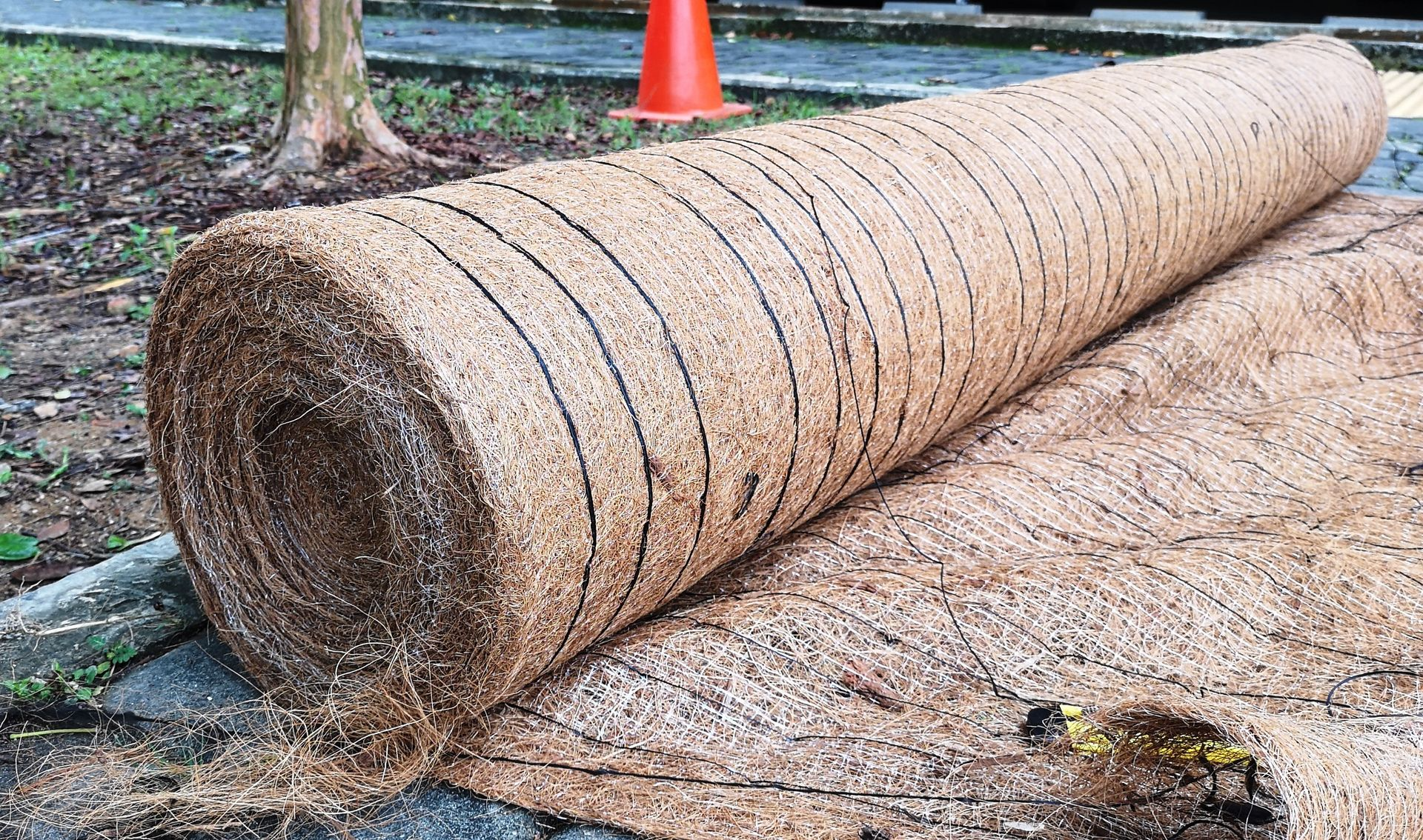We can control many things in this world, but weather is not one of them. Whether your construction site deals with persistent rainfall or periods of torrential rain, erosion and sediment runoff are major environmental concerns that require active management.
Thanks to the Clean Water Act, any worksite that discharges stormwater runoff into a public water system requires an NPDES permit and a stormwater management plan to prevent pollution and ecological damage.
Part of this plan–sometimes referred to as an SWPPP–requires the implementation of best management practices (BMPs) to prevent topsoil erosion and sediment runoff that may enter water streams.
In this article, we’ll demonstrate some common erosion and sediment controls we have found the most success with working with construction managers, as well as some BMPs for effective implementation. But first, let’s define erosion and sediment control so you have a better understanding of strategy.
What Is Erosion Control?
Erosion control is the active practice of preventing topsoil erosion from wind or water. In construction and industrial projects, erosion control is designed to keep native vegetation and soil intact to prevent exposure to the underlying sediment.
Another way of thinking about erosion control is as a preliminary first-line defense against stormwater runoff pollution. Since native vegetation resists water flow, protecting that vegetation with active control measures makes your erosion control efforts much more effective.
Furthermore, erosion control makes sediment control easier since it preserves native sediment intact, which is difficult to relocate after it’s left a work site.
Some additional benefits of erosion control include:
- Simplifying soil stabilization efforts
- Preserving the natural beauty of landscapes
- Reducing the need to invest in sediment control measures, which saves money
Choosing the right erosion controls for your construction zone depends on several factors, including:
- Topography
- Climate
- Soil Types
Some common examples of erosion control measures may include protecting the topsoil with an erosion control blanket, diverting stormwater with downpipes, or grading slopes to reduce runoff velocity.
With that said, let’s discuss the basics of sediment control and how it differs from erosion control.
What Is Sediment Control?
Sediment is composed of fine particles that are extracted from soils after significant erosion has occurred. These fine particles include grains of rocks, shells, and other solid materials found underground.
Sediment is considered a dangerous pollutant because it settles at the bottom of the water, making it difficult to remove. Lighter or suspended sediment also leads to high turbidity (i.e., cloudiness), which blocks sunlight and prevents algae and other microorganisms from growing. High turbidity and sediment pollution result in a decrease in aquatic life and a disruption of native ecological systems, both on land and in water systems.
Therefore, the primary purpose of sediment control is to trap or divert fine sediment particles that have already been loosened by erosion and collect them to redeposit them in the ground.
Some common examples of sediment controls may include the construction of sediment basins; inlet controls around storm drains, silt fences, and rock barriers around construction site perimeters.
Now that you have a working definition of erosion and sediment control let’s outline a few best practices that you can implement into your next SWPPP.
Erosion and Sediment Control Best Practices
General Best Practices
- Phase construction processes to reduce the risk of erosion occurring to exposed lands.
- Perform an analysis of the worksite to identify any vulnerable areas to erosion or sedimentation.
- Incorporate BMPs into your SWPPP and train all staff on proper BMPs.
- Perform routine inspections (every 7-14 days) of the worksite to identify any risk areas to your operation.
- Implement erosion control best practices first (read below) to reduce the risk of sediment runoff.
- Stabilize all worksites and their surrounding vegetation before the completion of a project.
- Erect permanent BMPs if necessary to stabilize soil systems if temporary BMPs are insufficient.
- Keep worksites clean and free of clutter. Also, seal any open bins and materials and store them in an area free from the elements.
Erosion Control Best Practices
- Stabilize exposed soils with native vegetation or mulching.
- Apply erosion control blankets or sodding over exposed soils to prevent further erosion.
- Employ controls, such as fences and slope grading, which slow the pace of stormwater runoff and allow for more infiltration.
- Divert stormwater runoff from steep slopes using downpipes and other physical diversions.
- Reseed all exposed soil using hydroseeding or other fast-acting measures.
- Use ripraps around areas with higher exposure to stormwater runoff, such as near basins or at the bottom of slopes.
- Apply mulch to slopes where a high velocity of stormwater runoff will occur.
Sediment Control Best Practices
- Use silt fences on slopes to trap and slow down sediment erosion.
- Use sediment basins at the bottom of slopes and in wide exposed areas to allow time to sift and remove sediment from runoff.
- Employ inlet controls around drain pipes to prevent sediment from physically entering sewage systems.
- Use riparian buffers around streams, ponds, and other water sources.
- Construct rock walls near the entrance and exit of construction sites to prevent runoff from stormwater.
- Fill ditches with rocks and vegetation to prevent sediment from collecting at the bottom where stormwater flows.
Constructing Your SWPPP
Once you have a list of BMPs established for your work zone, it’s time to put them into action and incorporate them into your SWPPP.
Creating an SWPPP and erecting the right BMPs for any project can be challenging. That’s why the environmental consultants at Path Light Pro are here to help. With years of experience working with construction companies nationwide, we have the tools and expertise to help you construct a proper SWPPP and put your BMPs to work so that your environmental and regulatory concerns are as simplified as possible.

